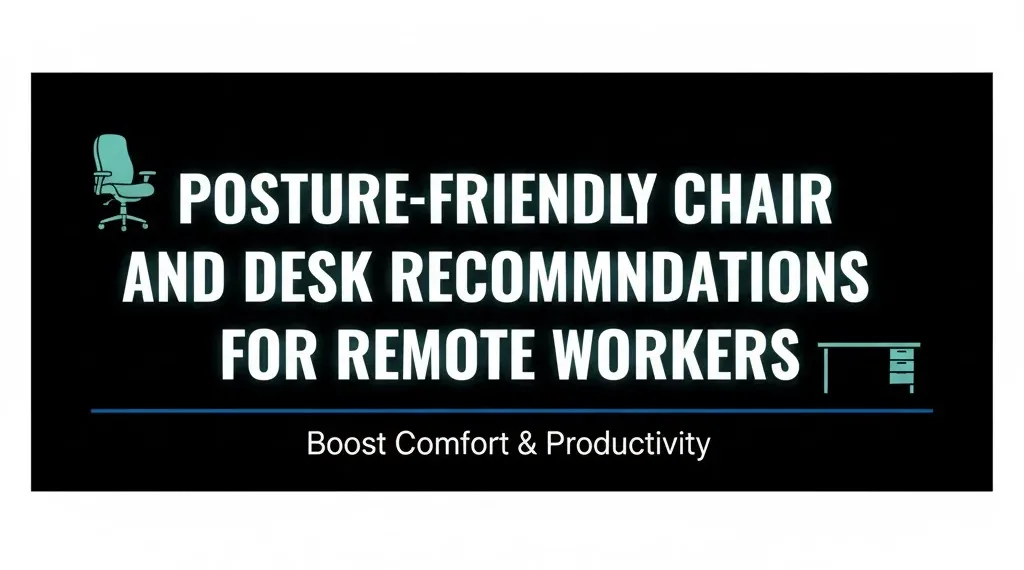Back pain is one of the most common problems affecting people of all ages. Whether you sit at a desk all day or spend hours on your feet, your back endures constant pressure and strain. The good news is that a few small lifestyle changes can make a huge difference in keeping your back strong and pain-free. These adjustments are simple, practical, and can easily fit into your everyday routine to support long-term spine health.
Understand the Importance of Back Health
Your back supports nearly every movement you make. It stabilizes your posture, protects the spinal cord, and enables daily actions such as lifting, bending, and walking. When neglected, muscle weakness and poor mobility can lead to chronic pain or even permanent damage. Building habits that promote spinal health prevents minor discomforts from becoming major issues later in life.
Prioritize Proper Posture Every Day
One of the most effective small lifestyle changes is to improve posture. Good posture reduces stress on the spine and muscles, promoting even weight distribution.
Tips for maintaining proper posture:
-
Keep your shoulders relaxed and aligned with your hips.
-
Avoid slouching when sitting at a computer or using a phone.
-
Adjust your chair height so feet stay flat on the ground.
-
Stand tall, keeping your core engaged.
-
Change positions every 30–45 minutes while working.
Improving posture not only prevents back pain but also boosts energy and confidence.
Choose Ergonomic Furniture and Equipment
Ergonomic furniture supports the spine’s natural curves, reducing unnecessary strain. Investing in well-designed tools can greatly enhance comfort at home and work.
| Equipment Type | Benefit | Ideal Use Case |
|---|---|---|
| Ergonomic Chair | Supports lower back and reduces slumping | Office desks or study stations |
| Standing Desk | Promotes movement and reduces stiffness | Work environments requiring long desk hours |
| Lumbar Cushion | Maintains spine curvature while sitting | Car rides or long meetings |
| Adjustable Monitor Stand | Keeps screen at eye level | Prevents neck and upper back strain |
Even small upgrades, like an external keyboard or footrest, can contribute to better spinal alignment.
Incorporate Daily Stretching and Strengthening Exercises
Strong and flexible muscles are the best defense against back pain. Daily stretching enhances flexibility, while strengthening exercises support core and back muscles.
Simple exercises for a stronger back:
-
Pelvic tilts to relieve stiffness.
-
Cat-Cow stretch for spinal flexibility.
-
Bridges to strengthen glutes and lower back.
-
Planks to develop core stability.
-
Child’s pose for relaxation.
These exercises take only 10–15 minutes a day but make a lasting impact on your back’s resilience.
| Exercise | Duration | Benefit |
|---|---|---|
| Cat-Cow Stretch | 2 minutes | Increases spine mobility |
| Bridge | 1 minute | Strengthens lower back muscles |
| Plank | 30–60 seconds | Builds core stability |
| Pelvic Tilt | 2 minutes | Improves posture alignment |
| Child’s Pose | 2 minutes | Promotes relaxation and spinal decompression |
Lift Objects Safely
Improper lifting techniques are a leading cause of back injuries. Many injuries occur because people bend from the waist instead of the knees.
Steps to lift safely:
-
Stand close to the object with feet shoulder-width apart.
-
Bend at your knees, not your waist.
-
Keep your back straight and core engaged.
-
Lift gradually using your legs, not your spine.
-
Avoid twisting while carrying a heavy load.
Developing a mindful lifting routine reduces the likelihood of pulled muscles or herniated discs.
Maintain a Healthy Weight
Excess body weight places stress on the spine, especially the lower back. Maintaining a balanced weight helps alleviate strain and supports a healthy posture.
Tips for weight management:
-
Eat nutrient-rich foods like fresh fruits, vegetables, and whole grains.
-
Limit processed foods and sugary drinks.
-
Stay hydrated throughout the day.
-
Incorporate regular walking or low-impact exercises.
A moderate diet combined with movement helps your back hold less pressure and function more efficiently.
Stay Active with Low-Impact Movements
Sedentary lifestyles contribute greatly to back pain. Simple, low-impact activities help nourish spinal discs and keep muscles healthy.
Best low-impact exercises for back health:
-
Walking at a moderate pace.
-
Swimming to relieve pressure on joints.
-
Yoga and Pilates for flexibility.
-
Cycling with proper posture.
-
Tai chi for balance and muscle coordination.
Consistency is key; even 30 minutes of activity daily can significantly benefit spinal health.
Sleep on the Right Mattress and Pillow
Rest is vital for muscle recovery and spinal alignment. A mattress that is too soft or too firm disrupts natural posture during sleep.
| Mattress Type | Firmness Level | Back Health Benefit |
|---|---|---|
| Medium-Firm | Moderate support | Keeps spine neutral |
| Memory Foam | Conforms to body | Reduces pressure points |
| Latex | Balanced support and durability | Enhances spinal alignment |
| Orthopedic Mattress | Targeted firmness | Recommended for chronic back pain |
Choose a pillow that supports the neck’s natural curve and prevents strain during sleep. Sleeping on your back or side is generally healthier than sleeping on your stomach.
Manage Stress to Avoid Muscle Tension
Stress causes muscles to tighten, especially in the back and shoulders. Learning to relax improves both physical and emotional well-being.
Stress-relief methods for back care:
-
Deep breathing or meditation for relaxation.
-
Gentle stretching breaks during work.
-
Listening to calming music or nature sounds.
-
Practicing mindfulness and gratitude.
-
Maintaining good sleep hygiene.
Managing emotional wellness can be just as important as managing physical activity when it comes to preventing back pain.
Avoid Sitting for Long Periods
Sitting too long compresses the spinal discs and weakens muscles. Prolonged sitting at work or home is a major contributor to pain and stiffness.
How to reduce sitting time:
-
Stand up or walk every 45 minutes.
-
Use a standing desk for part of the day.
-
Do simple seated stretches at your chair.
-
Park farther away to get more walking steps.
-
Schedule active breaks between tasks.
Movement keeps your back mobile, reducing stiffness and fatigue.
Wear Proper Footwear
Shoes play a vital role in maintaining proper back alignment. High heels, old shoes, or unsupportive soles can cause posture problems.
Footwear tips for a healthy back:
-
Choose shoes with cushioned insoles and arch support.
-
Avoid wearing high heels for long periods.
-
Replace worn-out shoes regularly.
-
Use orthopedic inserts if recommended.
-
Keep feet evenly positioned when standing for a long time.
Supportive footwear stabilizes your lower body, which in turn improves back posture.
Stay Hydrated Throughout the Day
Water keeps spinal discs hydrated and functioning properly. Dehydration can reduce disc cushioning, increasing pressure on the spine.
Drink plenty of fluids daily, especially during physical activity. herbal teas or water-rich fruits like cucumbers and oranges also contribute to hydration. Proper hydration reduces fatigue and helps your back remain supple and strong.
Take Regular Breaks During Work
Modern lifestyle habits involve screen time and sitting for most of the day. Taking short breaks allows the body to recharge and the muscles to stretch.
Quick break ideas:
-
Do light stretches every hour.
-
Walk for five minutes during lunch breaks.
-
Perform shoulder rolls or gentle twists.
-
Look away from screens to relax neck muscles.
Frequent, short breaks improve productivity while protecting your back.
Listen to Your Body
Ignoring back discomfort only makes conditions worse. Your body gives warning signs like stiffness, fatigue, or aches. Responding promptly can prevent chronic issues.
If pain persists for more than a few days, consult a health professional or physical therapist. Early intervention ensures faster recovery and long-term relief.
Adopt an Overall Back-Friendly Lifestyle
Combining posture awareness, consistent movement, and mindful living can transform your spinal health.
Key lifestyle takeaways:
-
Move frequently throughout your day.
-
Keep your spine aligned at rest and during motion.
-
Nourish your body with balanced nutrition.
-
Support mental well-being to reduce tension.
-
Create a sleep environment that promotes healing.
Small consistent habits turn into lasting spinal resilience and pain-free living.
FAQs
1. What are the best exercises to strengthen the back?
Cat-Cow, planks, bridges, and pelvic tilts are effective daily exercises for stronger back muscles.
2. How does posture affect back health?
Correct posture maintains spinal alignment and prevents muscle strain or chronic pain.
3. Can stress cause back pain?
Yes, stress can tighten muscles and contribute to tension-related pain in the shoulders and lower back.
4. What type of mattress supports a healthy spine?
A medium-firm or orthopedic mattress that supports your natural spine curvature works best.
5. How often should you take breaks from sitting?
Take a 5-minute walk or stretch every 45 minutes to keep your back active.
6. Are walking and yoga good for back pain?
Yes, both promote flexibility and strengthen core muscles, which reduces overall back discomfort.
Conclusion
Protecting your back doesn’t require massive lifestyle changes. Simple actions like improving posture, staying active, maintaining a healthy weight, and managing stress make a lasting difference. A few mindful habits practiced daily can keep your spine strong and pain-free for years to come. Take small steps now, and your back will reward you with strength, comfort, and flexibility throughout life.








